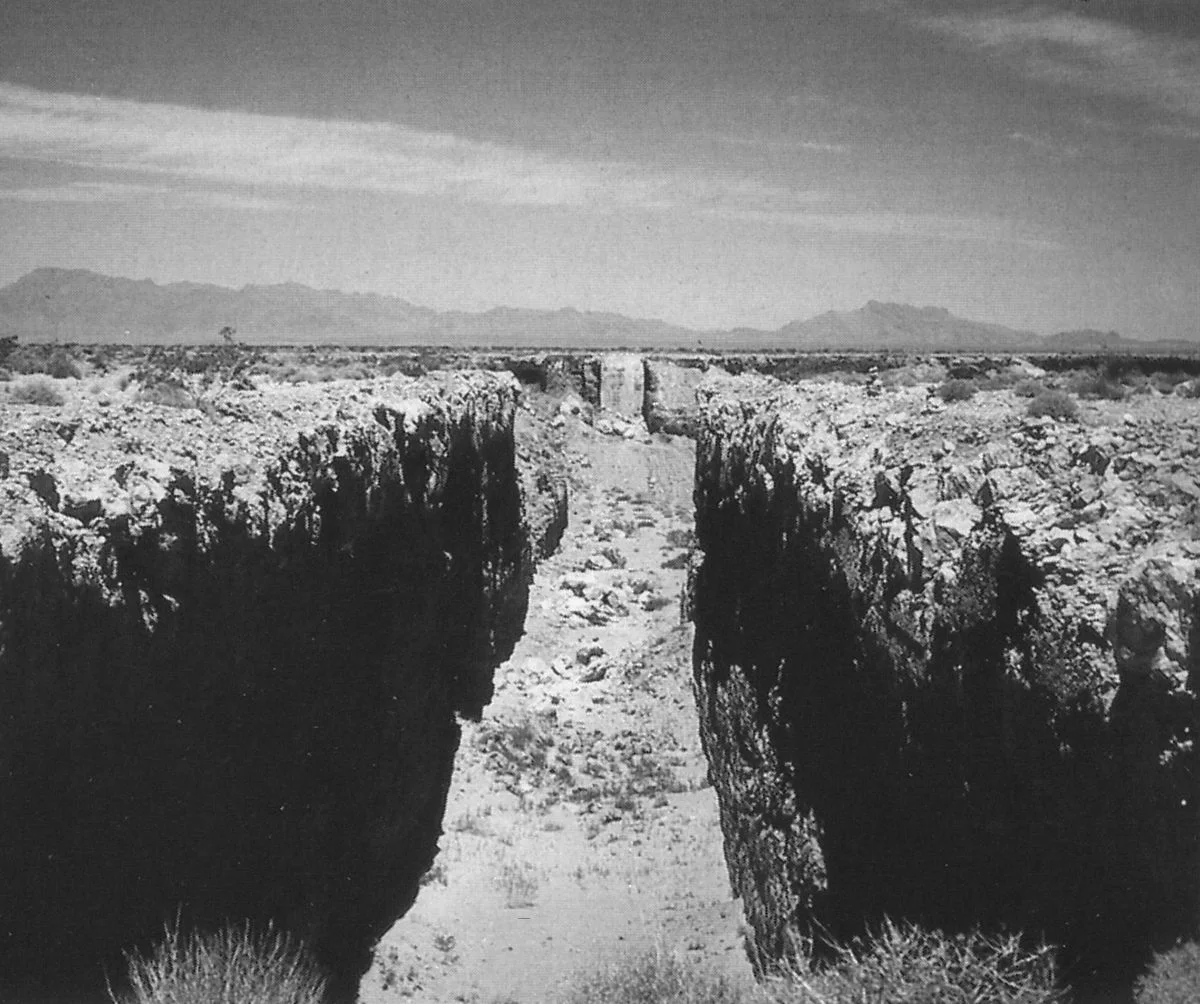Image: Flickr user Zachofalltrades
“There is nothing there, yet it is still a sculpture.” -Michael Heizer
By displacing an estimated 244,000 tons of rhyolite and sandstone rocks using a two-man crew handy with bulldozers and dynamite, artist Michael Heizer hunkered down in the middle of Nevada’s Moapa Valley to create what still ranks among the largest sculptures in the world. Funding for this insanely large project was provided by art dealer Virginia Dwan, who would go on to donate the deed to the property on which Double Negative is located to Los Angeles’ Museum of Contemporary Art in 1969, just before the piece was officially completed.
Raised by an archaeologist father, throughout his career, Heizer has long taken interest in working in the dirt. He consistently ranks among the upper echelon of the “Land Art” artists, with peers including Robert Smithson. Yet, unlike some of the more famous earthworks of his contemporaries, Double Negative is the kind of piece that is so understated, and so esoteric despite its size, that while tourists from all over the world will flock to see it in-person, most locals don’t even know it’s there.
It consists of two massive trenches dug at right-angles into the landscape. Today these angles are a little less crisp than they used to be, thanks to time and erosion, but Heizer wishes that no repairs be made on the piece, instead favoring the Earth’s eventual reclamation of it. These trenches span a natural chasm, but when viewed head-on, they line up directly, to the effect of extending the sky downward into the earth itself. It is a visual that is at once wonderful in concept and hard to identify at a passing glance, all while being perfectly apt for the American West, whose magic and lore have long centered on big skies reigning supreme over an unforgiving terrain.
